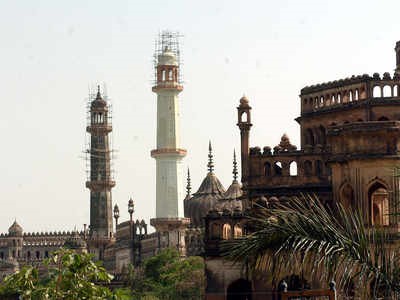
24 Indian heritage monuments 'untraceable' since 2013: Culture Minister
Encroachers have taken over these places, and since they were not monitored or physically protected, many monuments have been dismantled or torn down, either as building material or to provide space in expanding towns and cities

Twenty-four centrally protected monuments and sites in the country are “untraceable”. This was revealed by G Kishan Reddy, Union Minister of Culture, in the Lok Sabha on Monday (August 8).
This is, however, not the first time this figure has been shared with Parliament. Back in 2015, 2016 and again in 2017, this same question was posed in the Lok Sabha and the then Union Minister of Culture, Mahesh Sharma, had given a similar reply. However, at that time, it was made clear that the 24 monuments in India had become “untraceable” because of encroachments and rapid urbanisation. When this same question was posed in 2013, the answer at that time had been 35.
Subsequently, the Archaeological Survey of India (ASI), under whose protection these monuments fall, conducted a survey of its missing monuments and found that 92 monuments had gone missing from their site since 2013. Fourteen were affected due to rapid urbanisation, 12 were submerged under reservoirs and dams, and 24 sites were just untraceable, said a 2018 PIB report.
The steps taken to locate, trace, restore and recover the missing monuments were done through verification of old records, revenue maps, referring to published reports, physical inspection and deployment of team to trace them. The ASI also entered into an agreement with Indian Space Research Organisation (ISRO) to use its expertise in preserving and monitoring the heritage sites of India.
Also read: Twitterati roar against demolishing of 100-year-old Patna Palace
Eleven in UP alone
According to the ASI report, the maximum number of these untraceable historic and precious monuments were from Uttar Pradesh, followed by Delhi and Rajasthan. The government report provided the identity of these missing sites: they were the ruins of three small linga temples from 1000 AD; the Telia Nala Buddhist ruins in Varanasi; a 12th century temple from Rajasthan, and several tombs and cemeteries in Lucknow.
The Kutumbari Temple, Dwarahat, Almora in Uttarakhand, Bara Khamba Cemetery in Delhi, Inchla Wali Gumti, Mubarakpur Kotla in Delhi and in West Bengal, the Ruins of the fort, Bamanpukur, Nadia, and an Old European Tomb in Pune and the ruins of the Copper Temple in Arunachal Pradesh.
Encroachers have taken over these places, and since many were not monitored or physically protected, many monuments have been dismantled or torn down, either as building material or to provide space in expanding towns and cities.
The hills of Nagarjunakonda with ancient remains, a prehistoric site in Karnataka, Visveswara and other cave temples in Jammu and Kashmir, among others, got submerged under reservoirs or dams, according to the government report.
Also read: Ellora Caves to become first monument in India to get hydraulic lift: ASI official
Objects stolen
Besides the disappearance of complete monuments, the government also shared information on precious antiquated objects that have been stolen from these heritage monuments. The Union culture minister G Kishan Reddy in the written response to another question in Lok Sabha on August 8, said that 210 thefts, involving 486 objects, have been reported from centrally-protected monuments/sites since Independence.
Recovery of stolen objects is an ongoing process and 91 objects have been recovered so far, he said.
Most heritage sites in UP
In response to another query, Reddy said that ASI, which conducts regular village surveys, has surveyed 8,478 villages in the last eight years and antiquarian remains have been found in 2,914 of them. The ASI regularly conducted such surveys to explore and record the antiquarian remains.
Out of the 8,478 villages, the maximum number of villages were surveyed in Punjab — 1,459 and antiquarian remains were found in 130 of them. Karnataka was the next highest, where 933 villages were surveyed and antiquarian remains were found in 806 villages.
In total, 3,693 heritage sites in India are protected by the ASI, with 743 in Uttar Pradesh, the largest in a state, he said. These sites are declared as being of national importance under the Ancient Monuments and Archaeological Sites and Remains (AMASR) Act, 1958. Out of the 3,693 heritage sites, entry fee is charged at 143 locations, said the minister.
Also read: ASI shares pics of underground rooms of Taj Mahal; shows recent renovation work
In response to another query he said, for entry fee purposes, monuments have been divided into two groups. Group ‘A’- monuments inscribed on World Heritage list, Group ‘B’- others. Category ‘A’ has 20 entries and remaining 123 are under Category ‘B’, he added. Also, 1,224 monuments have cultural notice boards, the minister said, and gave a state-wise break up of the number of monuments, which display a cultural notice board. Karnataka seemed to be leading with 201 of its monuments displaying the board.
Conservation work in UP
On the conservation work undertaken by ASI, the minister said that 743 monuments, including 144 temples, in Uttar Pradesh are undergoing conservation work. “Conservation of monuments is a continuous process. Works are carried out by ASI as per site requirement and available resources,” he said.


